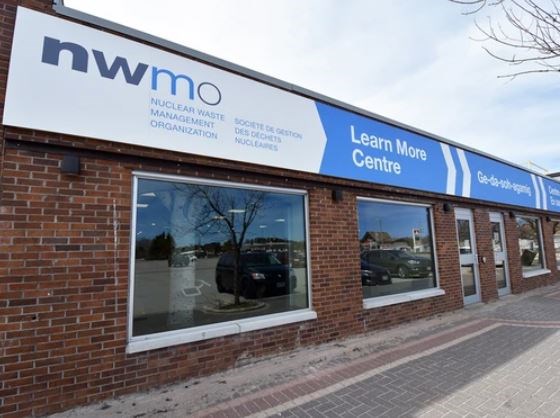IGNACE – With the technical and scientific research stages of the Deep Geological Repository already yielding significant results, the Nuclear Waste Management Organization feels that part of the project is well on its way to ensuring Canada’s 385 million tonnes (and counting) of nuclear waste can be safely stored for the long term.
“The amount of work that we had planned for the last two years really didn’t come to floriation,” said Bob Watts, Vice-President of Indigenous Relations and Strategic Programs, NWMO. “So, we had to take into account what several lockdowns we have experienced in the project. What that has meant both in the community and in the other work that we are doing and it really compelled us to say,” you know what, we should move our timeframe to 2024.”
Over the last three years, COVID-19 has put a hold on a lot of face-to-face interaction, and because of the lockdowns, NWMO feels that much of its face-to-face community engagement work has been left unfinished.
“A big part of our program is working with people,” Watts explains. “We have a technical program and then we have a program that is more face-to-face engagement with the people. The face-to-face engagement with the community wasn’t able to happen to the extent that we thought would happen for the last two years because of COVID. The technical program has advanced pretty well, but the social program has suffered.”
To say that the biggest part of the DGR project is based solely on technical research and not community engagement is like saying that there is nothing more to learn. For the DGR project to be successful, the NWMO must have the time to provide the public with the technical research so public so they can make an informed decision on the willingness to participate as the host for the DRG.
Hence, NWMO pushing the site selection date to 2024 is the best possible way to make sure the organization takes the time to inform the public of its research.
One part of the face-to-face community engagement has been extended to the Nishnawbe Ask Nation who last week at the Keewaywin Conference in Timmins passed a resolution to oppose the DRG project.
NAN conducted their study of the Revell Lakes site and presented those finding to the NAN chiefs. The study showed that if radioactive waste were to contaminate the Revell Lake site, there would be disastrous consequences to the treaty territories within the Nishnawbe Ask Nation. The Revell Lake site is situated near the Wabigoon Lake watershed which flows into the English River Watershed and from there to Hudson’s Bay.
When asked if NWMO is planning on setting up talks with NAN, Watt’s said that NWMO is hopeful that NAN will respond to that their calls.
“We are looking forward to having a discussion with NAN,” said Watts. “We have some history of what I think are really fruitfully discussions in the past with NAN and some communities. I think it would be great if we can re-engage. Clearly, NAN has identified some issues that are really important. So, I think there is really good ground for us to have some dialogue, to have some discussion with Nishnawbe Ask Nation.”
